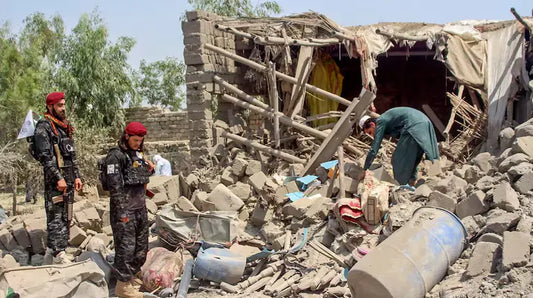India Urged to Bolster Anti-Stealth Radar and Air Defence Systems to Tackle Fifth-Gen Fighter Jet Threats: Air Marshal Dixit

According to a report by IDRW, Air Marshal Ashutosh Dixit, the Chief of Integrated Defence Staff (CISC), has emphasized the urgency for India to advance its anti-stealth radar and long-range air defence systems. At the CNN-News18 Defence Townhall held on June 28, Dixit highlighted the critical need for India to bolster its air defence capabilities in response to the increasing threat posed by fifth-generation fighter jets such as China's J-20 and FC-31, as well as the potential for Pakistan to acquire similar technologies.
This call for action follows regional tensions marked by India's success in Operation Sindoor, a four-day military engagement with Pakistan after an attack in Pahalgam. Dixit pointed out the transformative nature of stealth aircraft, including the U.S. F-35, China's J-20, and Russia's Su-57. These aircraft utilize low radar cross-section (RCS), sensor fusion, supercruise, and network-centric warfare to gain a decisive edge in combat. Their integration with drones and hypersonic systems further escalates their threat level.
With China's J-20 positioned near the Line of Actual Control and the possibility of the FC-31 being exported to Pakistan, Indian defence planners are increasingly concerned. During Operation Sindoor, Pakistan's deployment of the Chinese-made YLC-8E anti-stealth radar underscored the shifting dynamics in electronic warfare threats.
Dixit underscored the lessons from the operation, stating, "The side that sees first, sees farthest, and sees most accurately prevails." He emphasized that India must expedite the development of technologies to detect and counter stealth threats before they execute an attack.
India’s current air defence framework is multi-layered, integrating both indigenous and foreign systems. A crucial component is the Integrated Air Command and Control System (IACCS), developed by Bharat Electronics Limited, which amalgamates data from various radars, airborne sensors, and command centers to facilitate a swift response. During Operation Sindoor, it played a pivotal role in threat management by coordinating systems like Akash, MR-SAM, and the S-400.
Also Read: Complete List of India’s Air Defence Systems as of 2025
The Akash and Akash-NG systems, capable of ranges up to 80 km, along with the Indo-Israeli MR-SAM system, with a reach of 70–100 km, were vital in intercepting aerial threats during the operation. The S-400 Triumf system, with its 400 km range, compelled Pakistani assets to relocate from the conflict area. The DRDO-developed Arudhra radar, with a 300 km detection range and capability to track low-RCS targets, is another key element of India’s Air Defence network.
To further enhance this architecture, DRDO has introduced Project Kusha, an indigenous long-range air defence system comparable to Russia’s S-500. Announced on June 8, 2025, Project Kusha is designed to counteract stealth aircraft, hypersonic weapons, and ballistic missiles. It features a Long-Range Battle Management Radar (LRBMR) capable of detecting targets over 500 km away, integrating seamlessly with the IACCS. The system includes three interceptors—M1 (150 km), M2 (200 km), and M3 (350 km)—providing layered protection. Aiming for an 80–90% interception rate, Project Kusha is projected for operational readiness by 2028–2029.
Also Read: India Accelerates Development of Indigenous S-400-Like Missile System Under Project Kusha
Despite these developments, Dixit noted that detecting stealth aircraft remains challenging due to their low RCS, electronic countermeasures, and advanced coatings. He advocated for the creation of anti-stealth radars operating in lower frequency bands like VHF and UHF, which, though less detailed, can better identify stealth aircraft.
He proposed the integration of multi-band radar systems to create a comprehensive air picture by offsetting the limitations of individual frequency bands. He also identified future technologies such as quantum radar and passive radar systems, which can detect stealth aircraft using ambient radio signals, as crucial areas for further research.
Project Kusha, described by DRDO as transformative, aligns with India’s Atmanirbhar Bharat initiative by being entirely domestically designed and developed. It also positions India to offer advanced air defence solutions to countries seeking alternatives to Russian and Western systems.
As the dynamics of aerial warfare continue to evolve, Dixit’s statements illuminate a clear strategic direction: India must remain proactive by advancing its radar technologies and long-range air defence systems to protect its airspace from future stealth threats.



















